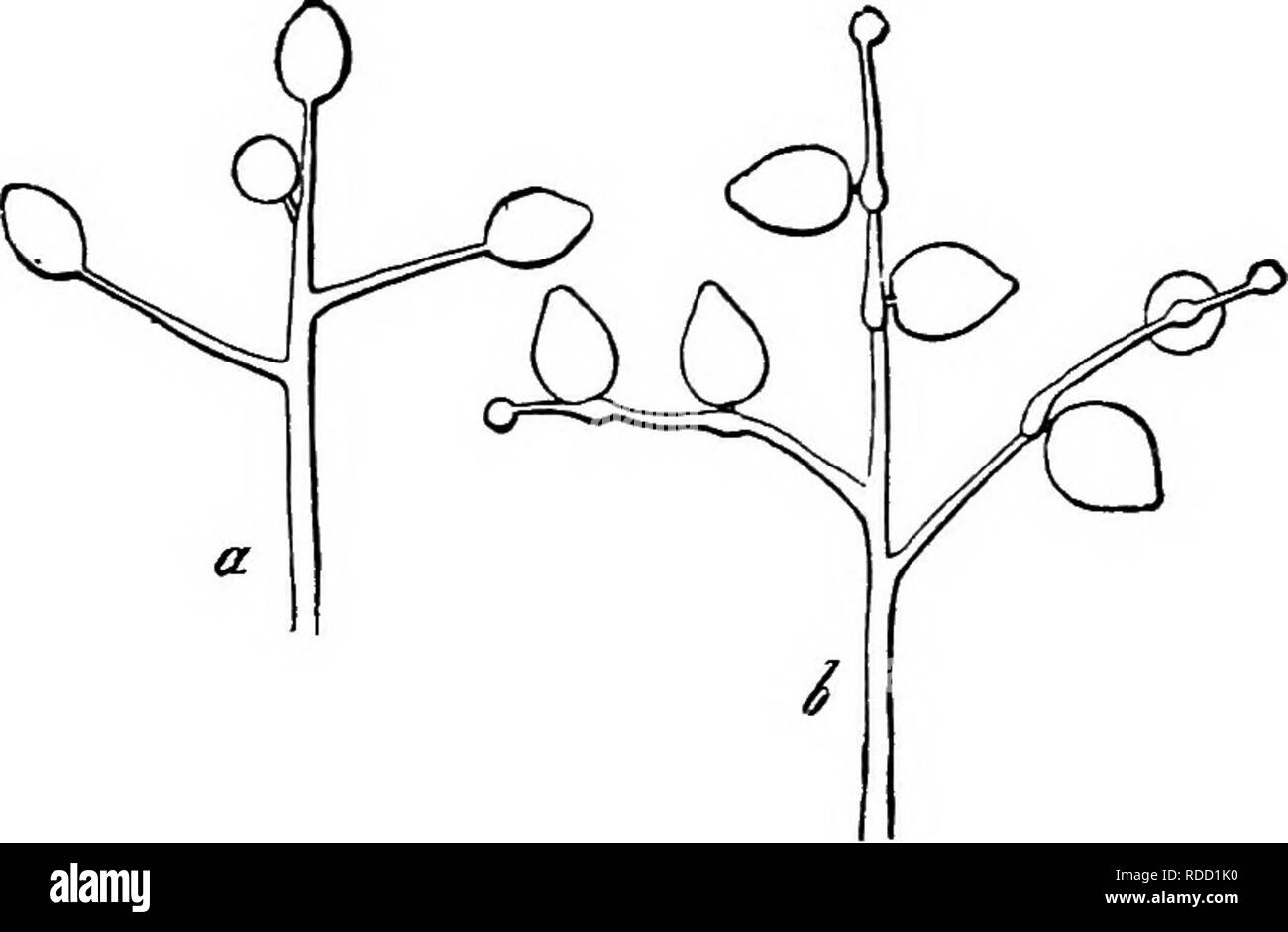. Comparative morphology and biology of the fungi, mycetozoa and bacteria . Plant morphology; Fungi; Myxomycetes; Bacteriology. CHAPTER V.—COMPARATIVE REVIEW.—PERONOSPOREAE. ^37 and especially of genera, may be taken chiefly from the gonidial formations, while the few species which have no gonidia are not easily classified. The main features in the formation of gonidia in the genera and subgenera of the Peronosporeae are as follows :— Pythimn. A persistent cell, usually the terminal cell of a branch, is delimited by a transverse wall and becomes a spore-mother-cell (sporangium). The gelatinous

Image details
Contributor:
The Book Worm / Alamy Stock PhotoImage ID:
RDD1K0File size:
7.1 MB (125.9 KB Compressed download)Releases:
Model - no | Property - noDo I need a release?Dimensions:
1953 x 1279 px | 33.1 x 21.7 cm | 13 x 8.5 inches | 150dpiMore information:
This image is a public domain image, which means either that copyright has expired in the image or the copyright holder has waived their copyright. Alamy charges you a fee for access to the high resolution copy of the image.
This image could have imperfections as it’s either historical or reportage.
. Comparative morphology and biology of the fungi, mycetozoa and bacteria . Plant morphology; Fungi; Myxomycetes; Bacteriology. CHAPTER V.—COMPARATIVE REVIEW.—PERONOSPOREAE. ^37 and especially of genera, may be taken chiefly from the gonidial formations, while the few species which have no gonidia are not easily classified. The main features in the formation of gonidia in the genera and subgenera of the Peronosporeae are as follows :— Pythimn. A persistent cell, usually the terminal cell of a branch, is delimited by a transverse wall and becomes a spore-mother-cell (sporangium). The gelatinously thickened wall at its apex suddenly expands into a thin-walled spherical vesicle, and into this at the same moment the whole of the protoplasm of the cell, which is hitherto undivided or has only shown transitory beginnings of division, streams rapidly, within a few minutes' time at most; there it breaks up at once into a number of swarm-spores, which issue from the delicate swelling vesicle and finally germinate. The sporangia in some species are of the same form as the gonidia of Phytophthora (Fig. 64), —round or ovoid vesicles prolonged at the extremity into a neck or beak, in the apex of which the swarm-spores are formed ; in others any portion, and often a very long portion, of the cylindric filamentous thallus-tube is delimited to form the sporangium, and its apex in which the swarm-cells are formed is then a small knob-like enlargement at the extremity of a branch, but is not otherwise distinguished by any particular form. There is usually no strict regularity dis- cernible in the arrangement of the sporangia. In species with vesicular sporangia the fila- ment which bears them often grows on into the empty spor- angium from the point of its insertion, or through its entire lengthj and then forms a new terminal sporangium as in Saprolegnia (see p. 46). A certain kind of regular ar- rangement and succession oc- curs in one species only, Pythium intermedium, and i